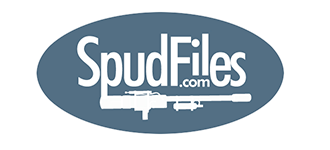After looking at many publications here, I decided to give it a try. In the end it ended up working quite correctly, and although it has just 3.5x of mixing pressure, it shoots with enough energy compared to those that are simply 0x, of which I have built.
On the other hand, it seemed not very prudent to give more pressure, because at the time of the shot, the weapon is only a few inches from my face and even more bearing in mind that the materials I used to build it are quite precarious, common sense tells me That an error can seriously hurt my face. I tried it until 6X, but I do not really want to spend 3x when I shoot it like an assault rifle. Sometimes is better safe than sorry. When I get better materials I will increase the compression.
I have prepared some diagrams to try to explain, and some photos of the behemoth
References photos:
1- Cylinder (modified syringe) Injector - doser.
2- Electrical safety switch.
3- 4-way valve and 2 positions.
4- Exhaust gas excess hose.
5- Valve Knob 4/2
6- Butane gas supply valve knob
7- Air pump
8- Gas supply valve 2/2
Functioning.
When the 4/2 valve is in the "A" position, the small butane gas pass-through valve (not included in the diagrams), which carries the gas from the tank, is opened (110 cm3 aerosol ), To the injector - dosing cylinder.
The gas enters according to the diagram, and when the plunger uncovers the hole "2" the surplus gas escapes to the atmosphere leaving only the necessary quantity and at atmospheric pressure, necessary for the combustion. In this prototype are about 16 cm3.
When the 4/2 valve is in the "B" position, operated manually, the hole "2" closes, and the hole "1" opens.
In this step air is blown in with the air pump (about 8 cycles), which presses the plunger in the direction shown in the diagram, and injects the gas measurement into the combustion chamber first, until the opening "1". At this moment, and having entered the combustion chamber all the gas previously dosed in quantity, only air enters until reaching the loading pressure, about 3.3 bar.
The valve 4/2 then moves to the "A" position, blocking the orifice "1" and thus being hermetically sealed.
insurance
The lock works with the 4/2 valve. When it is in position "B", during the inflation, an electric key operated by it, is disconnected. Although the trigger, (another electric key), is depressed, there is no spark inside the combustion chamber. They have to be on "on" the two keys for electric spark to occur. When the 4/2 valve is in the "B" position, this key is activated (the one on the safety valve), and when the second key is activated by the trigger, the gun fires.
Cleaning the combustion chamber.
When the compressed air is inflated, the piston in the combustion chamber compresses the remaining spring until the firing occurs.
When the pressure is reduced to atmospheric, on the face of the piston facing the gun barrel, the spring returns the piston until all residual burnt gases are exhausted to the outside and through the firing barrel. The combustion chamber is automatically cleaned for the next charge cycle.




















